Bedraggled Belize
The Customs official reached into a large box she had on the counter and with a big smile handed Julie a rainbow-coloured frosted cupcake. How often does that happen when you are passing into a new country? Well, Belize is very unique in this part of the world, English speaking, layback, more Caribbean than Central American, more black than Latino, much less stress. Never mind they confiscated some fruit and firewood, everybody was friendly, the fees were low and the vibe was good. We then drove into our fifth country on this trip, first time visitors for both Julie and I, and we were off to explore Belize.
If you read any blogs or forums from overlanders you find out quickly that one of the banes of road travellers’ lives is crossing borders. They are bureaucratic, slow, expensive, stressful and you always run the risk of something going wrong or being part of a scam. We exited Mexico by paying their outrageous Exit Fee and cancelling Tramp’s Temporary Import Permit (which triggers a refund of our large bond), then easily picked up our free entry visa and truck permit from Belize officials. The only thing we had to pay for was insurance which was about $13. The whole process was over in about 90 minutes. Off to a great start in Belize.
Belize is the former British colony known as British Honduras until it gained its independence in 1981. It’s principal language is English (although Spanish and Creole are common), it’s still part of the Commonwealth and the first impression is that you are more on a Caribbean island than on the Central American mainland. But Belize is a poor country with its GDP per capita only a third of Mexico and in the first village we hit there was no mistaking the fact these people are doing it much tougher than their northern neighbours.
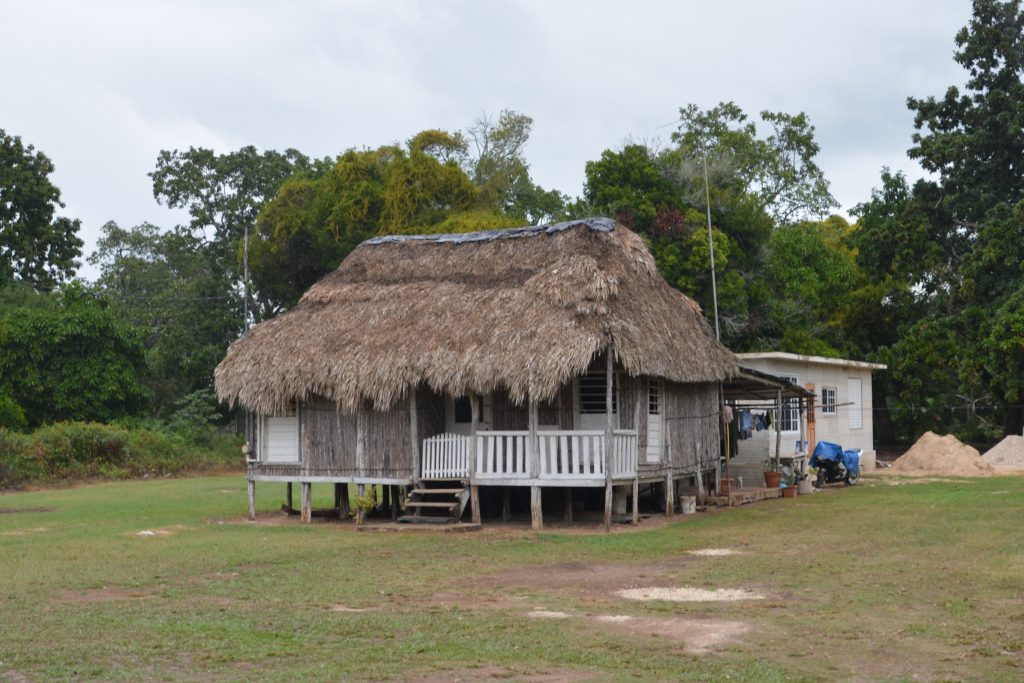
The Mayan-style home is still seen in the rural areas – although some of them like this one have had a little balcony added
Some interesting facts about Belize: it has only about 350,000 people, it has one of the lowest population densities in all the Americas, their Belizean Dollar is pegged to the US dollar at a convenient rate of two for one, it has the second longest barrier reef in the world (after Australia) and by one account its national flag is the only one in the world featuring human figures. Well, that’s something!
We drove into the first town of Corozal to find an ATM and loved all the signs in English – what a pleasure after more than 5 weeks in Spanish speaking countries! The town lacked some of the affluence we have become used to in Mexico – less cars and more bicycles, buildings, homes and businesses a bit shabbier.
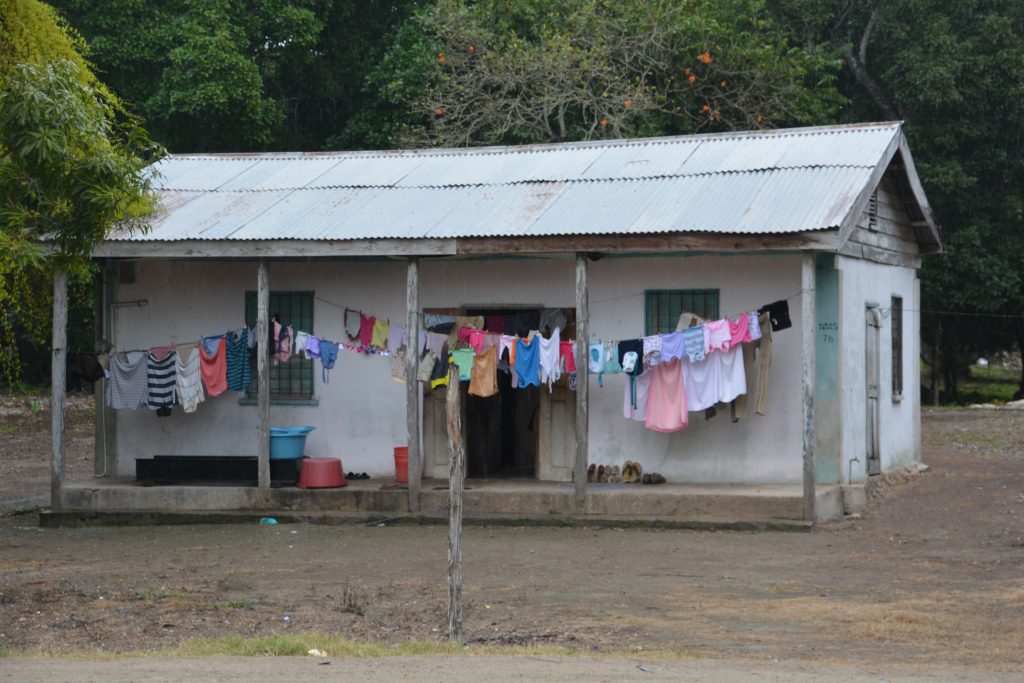
Everyone has washing day and with the constant rain we saw a lot of homes doing their best to get clothes dry
Northern Belize is said to be known for its rivers, sugar cane and ancient Mayan cities. As we proceeded south through the oddly named town of Orange Walk toward their largest town of Belize City we drove through endless fields of high healthy sugar cane, only a month or so from harvest, adding to the tropical feel of the place, much like what we’ve seen in Cuba, Fiji or northern Australia. But the grey clouds opened up and it started to rain, then it rained even harder, and it continued to rain the rest of the afternoon.
Belize’s rainy season is from May to November but this was the exception to the rule. The narrow roads became covered in puddles or in some places were badly flooded. At times with the wind screen wipers were on overdrive as we passed through small communities that had areas flooded up to their door step and modest homes on stilts that had become islands. At one stage the water across the roads were so deep it was dangerous for small cars to pass and we felt lucky to be in our big buddy Tramp to see us through.
Belize City with its 61,000 people is the largest town and former capital of the country and has a prominent position on the coast where rivers, ocean and beaches meet. Today it is a bustling town of narrow streets with a mix of old world charm and modern-day gritty fatigue. We drove around the streets for a while, taking in the busy rush hour scenes in the old part of town before heading south along the coast to camp the night at the town’s old marina which amongst other features now caters to travellers like ourselves. And so Tramp pretended to be a boat for one night while the rain kept coming down. But what of the excellent fireworks from the nearby beach? Were they somehow celebrating Australia Day? And if so, why weren’t we invited?
The glossy tourist brochures we picked up at the border waxed lyrical about the amazing attractions of Belize. We found the sites and attractions of Belize City to be a bit more modest than advertised but we really enjoyed our walk around town the next day. The people were friendly, often stopping to wave at us or say hello and everyone was quick to help us whenever asked. The town carries no pretences – the hot and humid weather and heavy rainfall combined with modest economic activities makes Belize City a short but interesting place to explore.
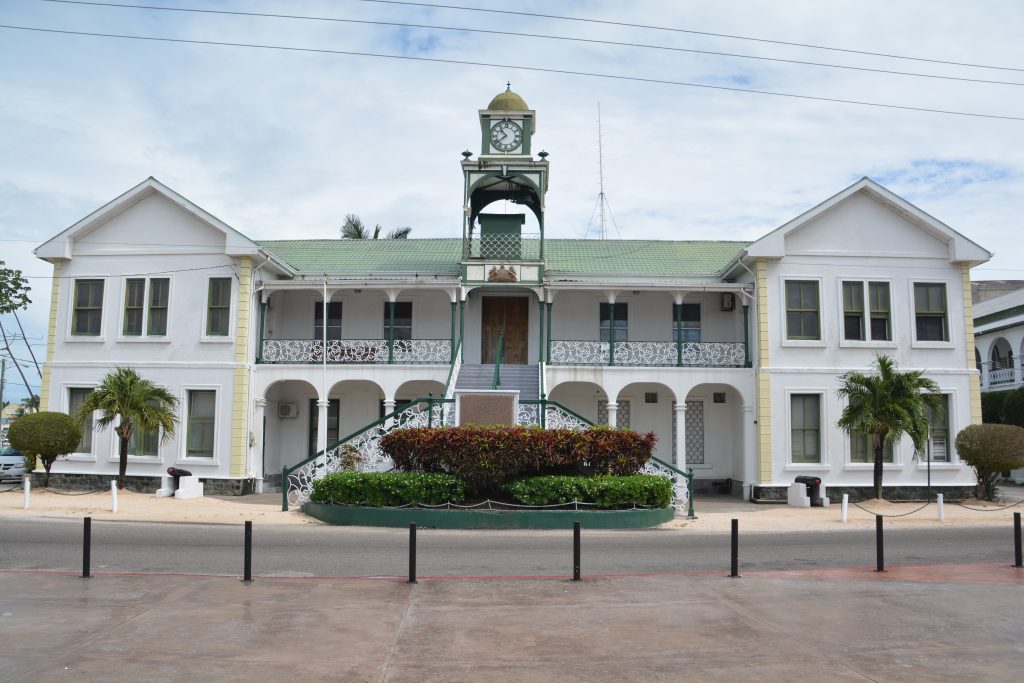
Most of Belize City’s historic buildings have been destroyed by storms but the Treasury Building still stood strong and elegant on the main square
That afternoon we drove southwest a short ways and camped at a roadside restaurant not far from the Belize Zoo. The roads and fields along the way were still flooded from the heavy rain and the forecast is for more. Never mind, we are intrepid in weather both fair and foul, and decided almost on a whim to visit the zoo.

Showing our versatility in camping spots, one night in an old marina and the next night on the grounds of a roadside restaurant
We aren’t really into zoos but were very curious about Belizean animals so why not. And what a pleasant surprise it was! First of all, only animals native to Belize so no weird things like giraffes or kangaroos. Second, the animals were in substantial open areas of jungle, just like their natural habitat, and the zoo acted as a rehabilitation centre for abandoned or injured animals.
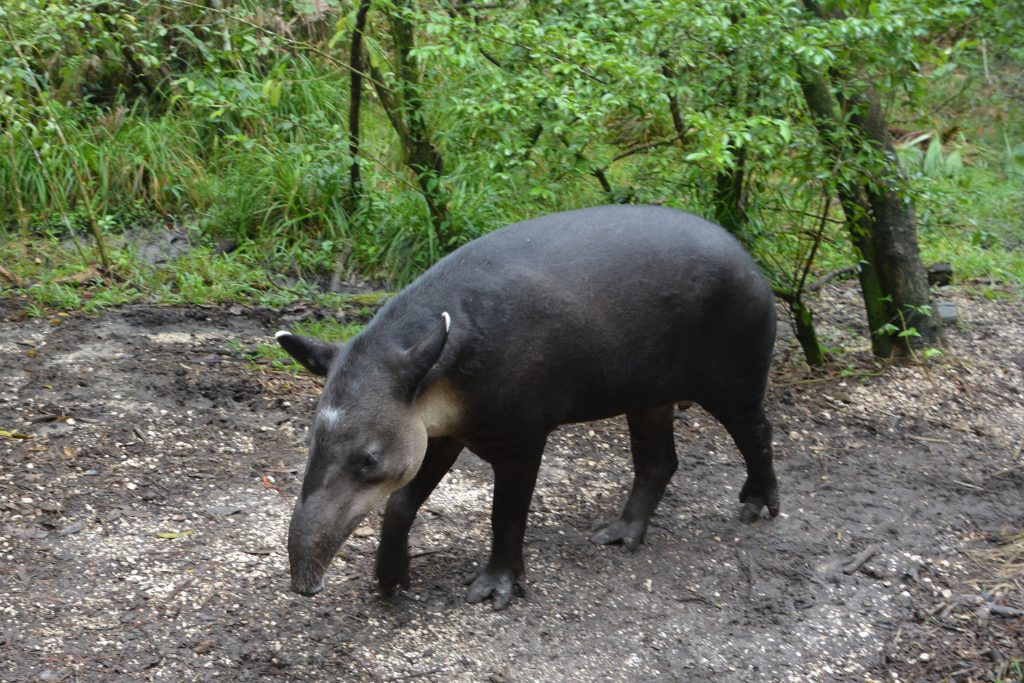
Our first zoo in many years but we liked this little one – here’s a Central American Tapir, Belize’s national animal
Walking amongst the paths between the large animal enclosures we saw a number of absolutely magnificent jaguars, the marquee animal of Belize, graceful, beautiful, the spots and patterns on their coats almost works of art. We also saw Belize’s national animal, the tapir, and their national bird, the colourful toucan. We are big fans of the toucan and saw many different species in our travels in South America years ago so this was a fun reunion.
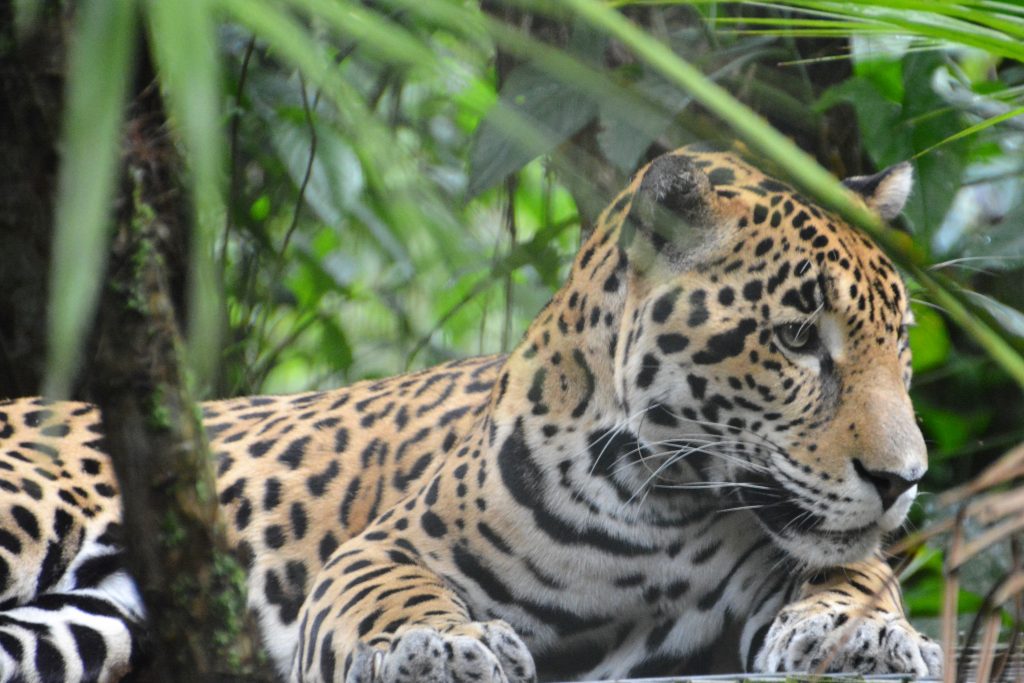
There are only about 700 jaguars left in Belize, which claims to be the jaguar capital of the world, but they are magnificent beasts
We also saw the huge harpy eagle, a number of colourful parrots and macaws, a couple of elegant pumas (very impressive), the handsome spider monkey and the ugly dark howler monkey (who makes up for their lack of looks by having a terrifying howling screen that sounds like a wounded velociraptor), crocodiles, peccaries (javelinas), the cute coatis, the tayra – which they also call bushdogs and which we saw at our camp the previous night, and a whole bunch of other cool jungle animals you don’t get back home. Hats off to the Belize Zoo, a very good showing.
We also spoke to a guy in our generation who was originally from Ohio but has been here for 37 years, bought land, cleared it, established orchards – mainly oranges – and has clearly been a driving force in the local economy through his investment, employment and support of the local area. He spoke glowingly of life in Belize, he raved on about the Mayan culture and the artefacts he’s found on his property and he obviously had no regrets about moving to Belize. Impressive stuff.
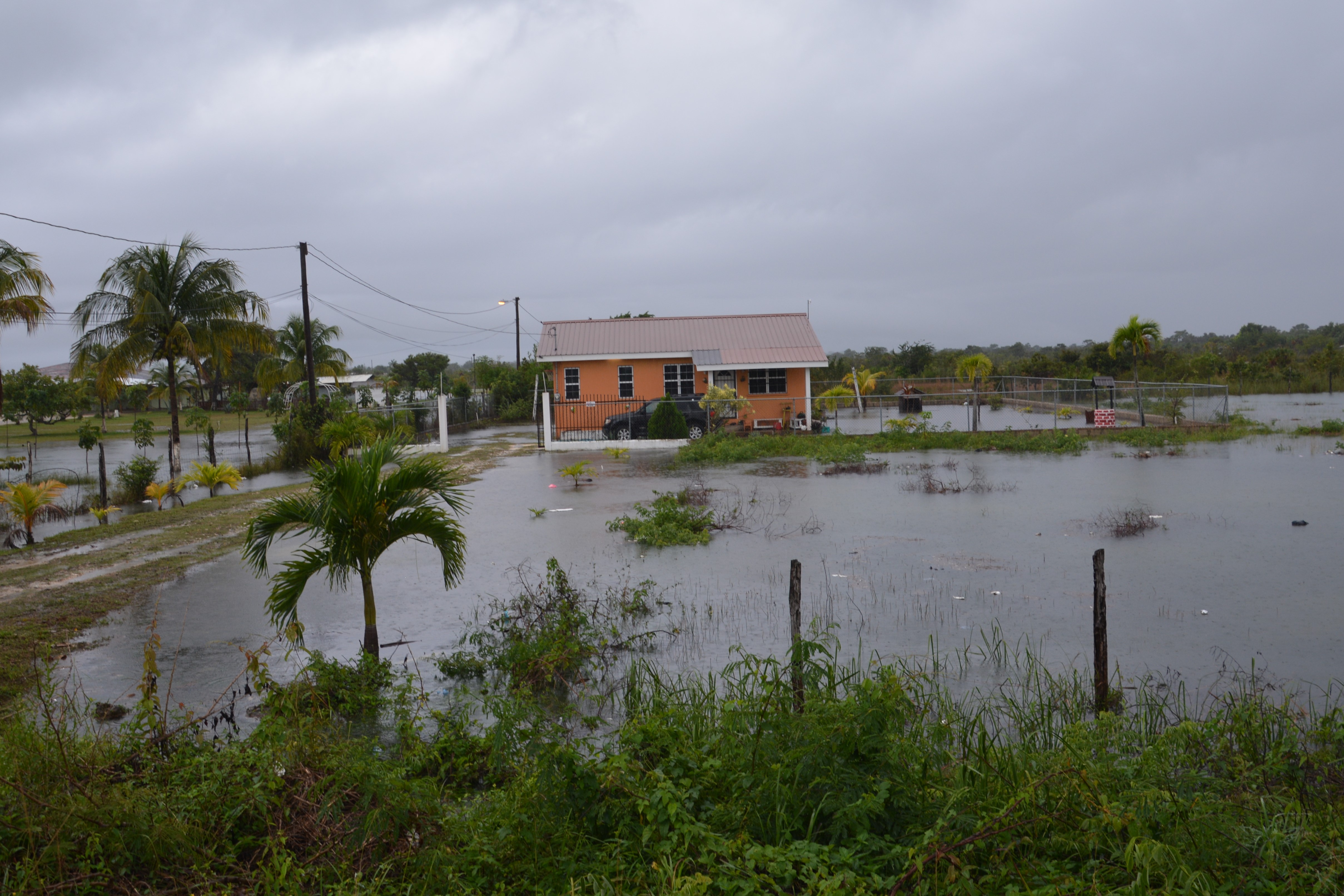

















no scuba diving?!
Hi Linda,
Unfortunately the weather was so bad that the ocean was all churned up and too cloudy – or muddy – for scuba diving or snorkeling. We’re big snorkeling fans but had to give it a miss this time. As we like to say, next time!
Bill